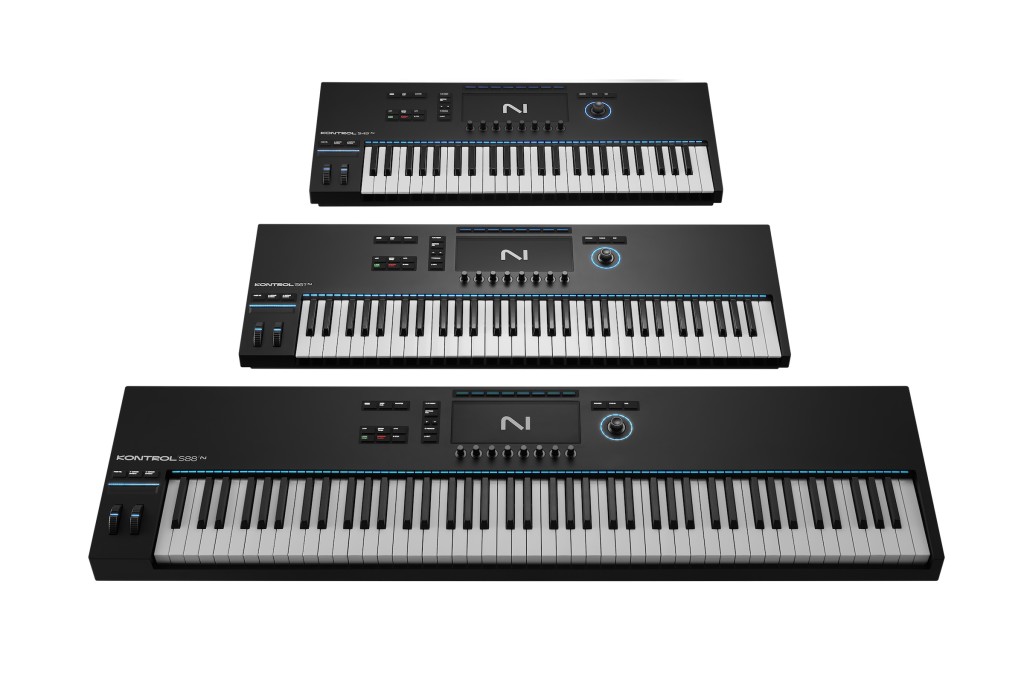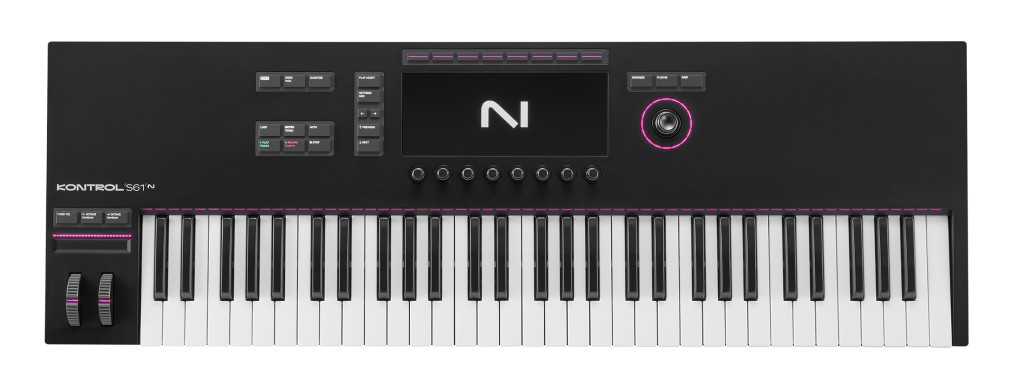Native Instruments has updated their Kontrol S-Series with a single big glass screen, redesigned buttons, and one big new feature – polyphonic aftertouch, for per-key expression. But those premium features will command a premium price, at $749 up to $1299 for the 88-key hammer action option. So, are we seeing a new wave of polyphonic expression of various kinds across the keyboard landscape?

These are still controller keyboards – you bring a computer. You need the computer for much of the onboard functionality, too. That means this option is mainly for folks who want to do stuff in the box – as others may start to comparison shop with standalone instruments. (See below.)
The S-Series can run standalone – here’s NI’s explanation of how to do so. But there’s not really anything new on the MK3 as far as adding functionality there, though it does mean you have a standalone keyboard for anything that receives polyphonic aftertouch messages. (That is true of a fair number of more advanced polysynth modules, and even some of the sound engines of keyboards that lack that capability onboard).
If you do work in the box, though, the S-Series clearly has appeal – and it’s the first major controller player I can think of with polyphonic aftertouch for expression on each key.
The MK3 features a new look and design. The MK1/MK2 functionality is all here – so there’s color-lighting above the keys for additional feedback (including information on zones, etc.), and compatibility with not only NI software but anything supporting their Native Kontrol Standard (NKS). That means if you load up, say, an Arturia plug-in, it’ll map with its own native browsing and controls, too. And you can always switch to a generic MIDI controller when you need.
New in this edition:

- “Refined industrial design” – it’s a new built; we’ll have to check that out
- Full-color glass display (as opposed to the split, Maschine-style displays on the MK2 or smaller displays on MK1)
- New keyboard made with Fatar with polyphonic aftertouch
- “Metal-touch” pitch and mod wheels
- Redesigned Light Guide (now with clear per-key lights)
- USB, MIDI, and USB-C connectivity
- Inputs for four pedals – sustain, expression, and 2x assignable
And they’ve updated the software bundle to Komplete 14 Select, though honestly I’m guessing if you are investing in this keyboard you’re likely to have a full Komplete or some other full library of NKS-compatible software.
I just want them to make those trippy stands that don’t actually exist that their graphic designer dreamed up; those look cool.
Then there’s the pricing:
Kontrol S49 MK3 pricing:
€ 749,00 / $ 749,00 / JPY 107.400,00 / £ 649,00 / AUD 1.099,00 / CAD 969,00 / CHF 749,00 / CNY ¥ 5.899,00
Kontrol S61 MK3 pricing:
€ 849,00 / $ 849,00 / JPY 121.700,00 / £ 749,00 / AUD 1.299,00 / CAD 1.099,00 / CHF 849,00 / CNY ¥ 6.699,00
Kontrol S88 MK3 pricing:
€ 1.299,00 / $ 1.299,00 / JPY 186.200,00 / £ 1129,00 / AUD 1.949,00 / CAD 1.679,00 / CHF 1299,00 / CNY ¥ 9.999,00
It does look like a really worthy update. And I don’t doubt for a second that it’ll be a hit for those fully invested in the Komplete Kontrol way of doing things who have the budget for an update.
The challenge may be that the MK2 already works really well on its own, especially if polyphonic aftertouch isn’t so important to you.
I’m curious to see if we do get other controllers, too. Maybe the most interesting part of this announcement is that they didn’t make an entirely custom keyboard – it’s still a Fatar keybed.
But yeah, if you aren’t so worried about software integration, I expect you’ll look at that price and start to think about buying a standalone instrument. We’re starting to get into the range of the ASM Hydrasynth, which is a full-blown polysynth and has polyphonic aftertouch and operates standalone. (Even the lowly Explorer has polyphonic aftertouch! Though, okay, you could argue that the quality is better on NI’s offering.) Or, if you’re going to splurge anyway, there’s the Expressive E Osmose with multi-axis expressive action and a powerful internal synth – no computer required. I mean, yes, at a higher price, but you get the point.)
This is really not a ding at NI, necessarily – but no matter how nice the hardware, the value is going to come down to whether you want to be locked into specific software integration. That’s true on of Komplete Kontrol solution (with or without NKS), it’s true of Traktor and Maschine, it’s true of Ableton Push, and the list goes on.
Looking beyond just this one product, though, if we’re about to see polyphonic aftertouch and MPE become more widespread – I’m all in.
More:
https://www.native-instruments.com/kontrolsseries
Here’s an excellent review that I’m glad I didn’t have to do – thanks, loopop! – just an epic amount of work in an epically short period of time.
And a review of polyphonic versus monophonic (channel) aftertouch:
I really couldn’t think of a controller that’s readily available with polyphonic aftertouch; it’s hard enough to remember which polysynths have it. But if you know one, give a shout!